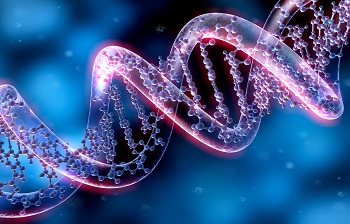Unlocking genetic secrets for more effective medical treatments

Related topics
Health Innovation Health, Demographic Change and Wellbeing Denmark France Germany Netherlands Spain Sweden United Kingdomdate: 23/02/2015
Project: REvolutionary Approaches and Devices for...
acronym: READNA
See also: CORDIS
Our genetic material – or genome – is encoded in DNA. Most DNA molecules consist of two strands coiled around each other to form the famous double helix, and along these strands are specifically arranged units that carry our unique genetic information.
“The DNA molecule is like a hard disc – it’s a storage device,” says READNA project coordinator Ivo Gut, director of the Centro Nacional de Analisis Genomico in Barcelona. “You get a read-out from a single cell as a linear entity – letters stretching to the three billionth character.”
By being able to access and decipher this information, scientists and medical professionals now have the opportunity to better understand diseases like cancer, provide early screening and deliver faster and more accurate diagnoses, he says.
Second generation sequencing
This is not to say, of course, that reading genetic information is like picking up a book – there is a huge amount of encrypted data to process – and the procedure remains expensive, limiting its clinical application. This is why the READNA project sought to develop cost effective DNA analysis that could be brought into clinics and hospitals, thus improving healthcare and saving lives.
“The second generation DNA sequencing technologies we have developed promise to be game changers, because they are more accurate and much more cost-effective,” explains Gut. “This will make a big difference to patients, who will have thousands of points of their genome analysed as opposed to just five or six with first generation technologies.”
These sequencers are now being adopted for clinical application, and the technology can also be used to quickly identify pathogens and diagnose rare genetic disorders.
“We have also standardised certain techniques, and been able to define exactly what good sequencing is,” adds Gut. Project researchers have also worked on third and fourth generation sequencing technologies, pushing the frontiers of what is possible. Perhaps the most exciting example of this has been Oxford Nanopore Technologies’ MinIon device, a miniature DNA sequencing machine that can be plugged straight into a laptop computer.
“The future of this technology is hugely exciting,” says Gut. “You’ll be able to take a piece of DNA, put it into a device smaller than a pack of cigarettes and it will sequence the DNA for you in real time. Wire this device up to your laptop, and you’ll be able to see the sequence developing.”
The ultimate aim will be to develop technologies that can sequence an entire human genome for €1000 in less than a day, he adds.
A never-ending knowledge quest
The READNA project, completed in 2012, involved a multidisciplinary consortium of researchers from 12 academic institutions and six companies – the “Champion’s League” of experts in the field, says Gut.
Some 20 patent applications were made and over 100 research papers published during the project. Several developments have or will be reaching the market soon, while several spin-off companies were created.
But for all the advances made, Gut remains humbled at just how little we really know about the genome.
“It is still not an understood place,” he says. “It’s a little bit like a bus. You have all these bits – or people – inside who have a different function. You get to a stop, and somehow the bus rearranges itself internally to let some people on, and some people off. When it comes to the genome, how is this done? We don’t know. But these are the challenges.”
